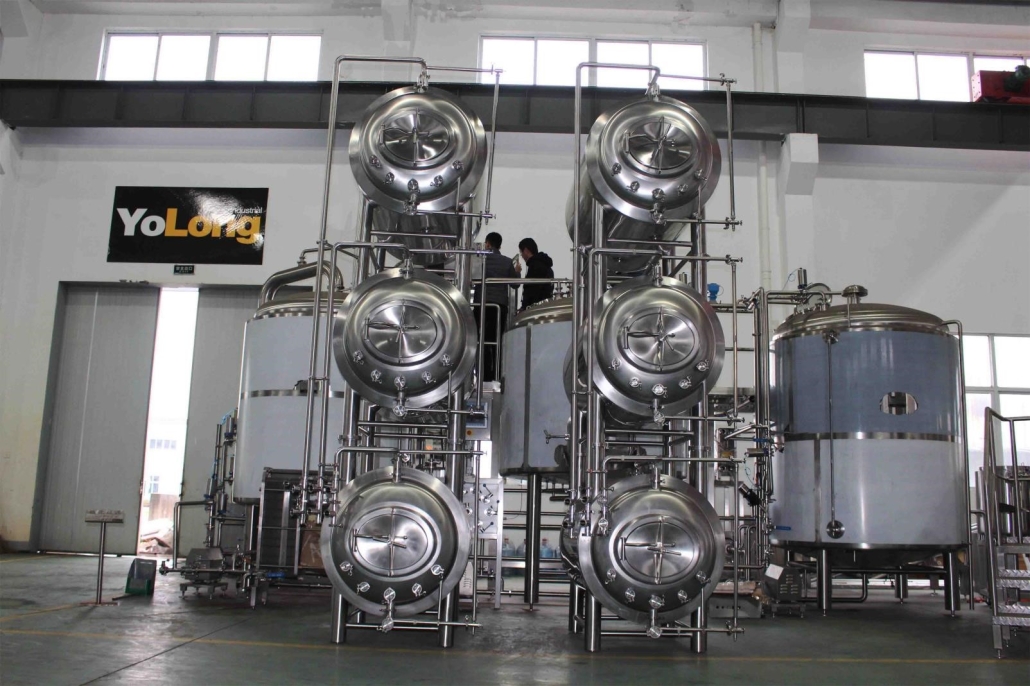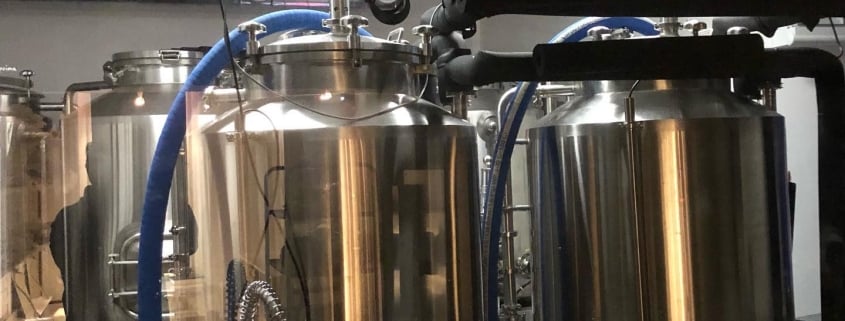Beer Home Brewing Equipment
Home brewing beer is a fun, rewarding hobby that produces delicious craft brews. With the right beer home brewing equipment, you can make high quality ale and lager in your own kitchen. This guide will explore all the gear needed to brew beer at home.
Overview of Beer Home Brewing Equipment
The basic beer home brewing equipment setup has four essential components:
- Brew kettle – The main vessel for heating and fermenting the beer. Choose stainless steel for durability.
- Fermenter – Usually a bucket or carboy to hold the beer during the fermentation phase.
- Racking equipment – Used to transfer the fermented beer into bottles, kegs or secondary fermenters. Includes tubing, racking cane and hose.
- Bottles/Kegs – Vessels to store the finished beer in for carbonating and serving.
Additional equipment like sanitizers, airlocks, thermometers and cleaners are also required. More advanced systems add pumps, valves, spargers and chillers for improved functionality.

Types of Beer Home Brewing Systems
There are many options when selecting a beer home brewing setup:
| System Type | Description |
|---|---|
| Basic Brew-In-A-Bag (BIAB) | All-in-one, affordable entry-level system with integrated boiler and single vessel |
| Intermediate Kit | Upgrade with separate mash tun and boil kettle. Better temperature control. |
| Advanced All-Grain | High end, multiple vessels for mashing, boiling and fermenting for best quality |
| Electric Brewery | Automated electric heating elements for precise control |
| Speidel Braumeister | Top-of-the-line automated all-in-one electric brewery |
The right equipment depends on your existing skills, interest level and budget. We recommend starting simple with a BIAB or kit, then upgrading as your experience grows.
Beer Home Brewing Process Overview
Understanding the basic beer brewing process will help determine what features are most useful in beer home brewing equipment:
- Mashing – Mixing milled grains with hot water to convert starches into fermentable sugars
- Lautering – Separating sweet liquid wort from grains
- Boiling – Adding hops for bitterness, flavor and aroma while sterilizing the wort
- Cooling – Quickly chilling boiled wort to optimal yeast pitching temperature
- Fermenting – Adding yeast for alcohol production during weeks-long primary and secondary fermentation
- Bottling/Kegging – Transferring beer with priming sugar for carbonation and conditioning
The best systems make the complex mashing and lautering steps easier and give flexibility for different brewing techniques. Temperature sensors and adjustable heating elements also help hit target numbers.
Key Features and Cost Considerations
Price, capacity, customization and automation level vary greatly between basic and elaborate brewing setups:
| Basic BIAB Kit | Intermediate System | Advanced Electric | |
| Price Range | $100 – $350 | $350 – $750 | $1000+ |
| Batch Size | 1-5 gallons | 5-10 gallons | 10-15+ gallons |
| Design | integrated kettle | Separate vessels | multiple kettles |
| Temperature Control | Basic | Improved | Automated, precise |
| Customization | Limited | Modular Upgrades | Fully Customizable |
| Automation | Manual | Some Automated Steps | Programmable, electric |
The upgrade from basic to intermediate or advanced systems requires more space, equipment cost and learning new techniques but enables larger batch sizes and better beer consistency.
Selecting Beer Brewing Equipment Suppliers
Many retailers sell beginner friendly “starter kits” with essential beer home brew equipment at reasonable prices. As you advance, buying individual stainless steel pots, chillers and other gear from specialized homebrew shops allows full customization.
| Supplier Type | Examples | Price Range | Quality Level |
| Online Homebrew Retailers | Northern Brewer, MoreBeer | $$-$$$ | Beginner to Intermediate |
| Local Homebrew Shops | My Local Homebrew Shop | $-$$ | Beginner |
| Commercial Equipment Sites | Williams Brewing, SSBrewTech | $$$-$$$$ | Intermediate to Advanced |
We recommend supporting your local homebrew shop first before trying the wider selection of online beer brewing equipment merchants. Talk to the experts at the shops to understand what system best meets your needs.
Beer Brewing Equipment Installation and Maintenance
Proper installation and care ensures safe, long-lasting operation of your beer home brewing equipment:
| Task | Description |
| Installation | Review manual and assemble parts based on instructions |
| Cleaning | Disassemble and wash equipment after each use with PBW and hot water |
| Sanitization | Apply food-grade no-rinse sanitizer before brew day |
| Maintenance | Periodically inspect seals, gaskets, fittings and sensors |
| Calibration | Ensure temperature sensors and heating elements are calibrated |
Following the manufacturer cleaning and maintenance schedule prevents growth of bacteria or wild yeast that create off-flavors. Taking good care of the gear also extends its usable life by many years.
How to Select the Best Beer Brewing Equipment
Choosing the ideal beer home brewing equipment setup requires factoring in available space, skill level, budget and quality demands:
Space – Measure area in kitchen, garage or basement. Taller kettles need more height clearance.
Skill Level – Beginner brewers do best with intuitive all-in-one systems while experts customize modular components.
Budget – Get quotes from multiple suppliers. Buy once, cry once for long term equipment investments.
Quality – Read homebrew community reviews before purchasing. Look for stainless steel craftsmanship and precise temperature control.
Upgradability – Can additional fermenters, kettles and accessories be added later as your system expands?
Efficiency – Does the system allow hitting target gravity and alcohol levels consistently?
Yield – What batch size works for your personal or commercial volume requirements?
Also make a checklist covering must-have features like automated temperature control, pump assistance and cleaning accessibility plus nice-to-have add-ons likeCopy
go on
L
Here is more content to continue the article:
Pros and Cons of Electric vs Gas Heating
An important choice is selecting either electric or propane gas heating elements. Each option has advantages and disadvantages:
| Electric Heating | Gas Heating | |
| Pros | Precise temperature control, convenient, no open flames, compatible with smart automation | More power, faster heating, outdoor use possible |
| Cons | Slow heating, limited power, not for outdoor use | Harder temperature control, CO safety issues, ventilation needed |
For indoor brewing with meticulous recipe steps, electric systems excel. Large batch propane systems work well outdoors. Many advanced builds use electric heating combined with a gas burner for the fastest wort boiling.
Tips for Expanding Starter Brew Equipment
The addictive hobby of homebrewing often leads to upgradeitis after starting with basic beer home brewing equipment. Follow this path avoid wasted purchases:
- Master simpler recipes before upgrading – additional capacity doesn’t improve existing processes
- Identify bottlenecks – is it slow mashing, underpowered boiling, small fermentation space limiting you?
- Start modular – choose custom systems with detachable parts that enable adding new vessels and accessories
- Consider electric upgrades – automated control panels and heating simplify complex brewing
- Research widely – read homebrew forums for unbiased reviews before buying
- Invest in stainless steel – avoid plastic or glass carboys prone to scratches harboring bacteria
With strategic upgrades over time guided by personal experience rather than impulse buys, a customized dream brewery evolves in your space.
FAQ
Here are answers to some common questions about selecting and using home brewing systems:
| What size system should I get as a beginner? | Start with at least a 5 gallon brew kettle BIAB or kit. This allows brewing standard 5 gallon batches to fill cases of 12 oz bottles or small corny kegs. |
| Is stainless steel necessary or can I use aluminum? | Stainless is best – impermeable for no corrosion or metallic off-flavors. Stainless pots also have higher resale value. |
| Should I buy a pre-made kit or piece together my own system? | Kits simplify getting started quickly but limit customization. As experience grows, choosing individual components allows bonus features. |
| Can I create my own electric brewery panel? | Yes, with background in electrical work and following brewery control panel guides it’s possible to build or customize automation. |




